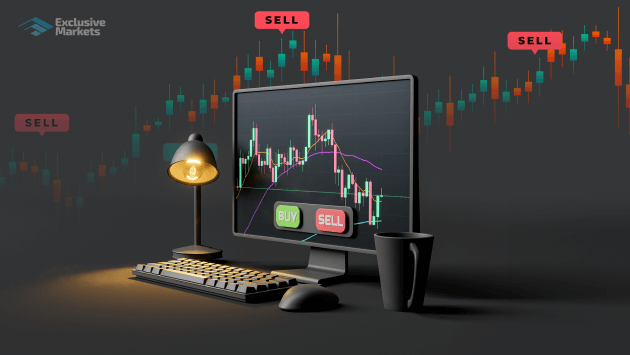
Forex Trading for Beginners: A Comprehensive Guide
If you are looking to dive into the world of trading, you have come to the right place. Forex trading, or foreign exchange trading, can be a lucrative venture if you approach it with the right knowledge and strategy. In this guide, we aim to provide you with essential information that will help you understand the basics of Forex trading and get started on your trading journey. For those seeking the forex trading for beginners Best Indonesian Brokers, we will have tips and resources included later in this article.
What is Forex Trading?
Forex trading involves the buying and selling of currencies in the foreign exchange market. The goal of Forex trading is to profit from fluctuations in the exchange rates of different currencies. Unlike stock trading, Forex trading occurs 24 hours a day, five days a week, allowing traders to take advantage of global markets at any time.
Understanding Currency Pairs
In Forex, currencies are traded in pairs, such as EUR/USD (Euro/US Dollar) or GBP/JPY (British Pound/Japanese Yen). The first currency listed is known as the “base currency,” and the second is called the “quote currency.” The exchange rate tells you how much of the quote currency is needed to buy one unit of the base currency. For example, if EUR/USD is 1.20, it means 1 Euro is equal to 1.20 US Dollars.
Getting Started with Forex Trading
To start trading Forex, you need to follow several key steps:
- Educate Yourself: Before you start trading, it is crucial to understand the fundamental concepts of Forex, including market analysis, trading strategies, and risk management. Take the time to learn about different trading styles such as day trading, swing trading, and position trading.
- Choose a Reliable Broker: Selecting a reputable Forex broker is vital. Look for brokers that are regulated and have a good reputation. As mentioned earlier, for those in Indonesia, you can explore options from Best Indonesian Brokers.
- Open a Trading Account: Once you have selected a broker, you can open a trading account. Brokerage accounts can be standard, mini, or micro accounts, each requiring a different minimum deposit. Choose one that fits your investment strategy.
- Practice on a Demo Account: Most brokers offer demo accounts that allow you to practice trading with virtual money. This is a great way to test your strategies and familiarize yourself with the trading platform before risking real money.
- Develop a Trading Plan: Create a trading plan that outlines your goals, risk tolerance, and the strategies you’ll use. Stick to your plan and adjust it as needed based on your trading experience and market conditions.

Key Concepts to Know
As a beginner, you should be aware of several important concepts in Forex trading:
- Leverage: Forex trading allows traders to use leverage, enabling them to control larger positions with a smaller amount of capital. While leverage can amplify profits, it can also increase losses.
- Margin: Margin is the amount of money required to open a leveraged position. Understand how margin works, as it is crucial for managing your trades.
- Pips: A pip is the smallest price movement in Forex trading, typically representing the fourth decimal place in a currency pair (e.g., 0.0001). Understanding pips is essential for calculating your profits and losses.
- Technical and Fundamental Analysis: Traders often use technical analysis (analyzing price charts) and fundamental analysis (evaluating economic indicators) to make informed trading decisions.
Common Trading Strategies
Here are some popular Forex trading strategies that beginners often use:
- Trend Following: This strategy involves identifying and trading in the direction of the market trend. Traders look for signals that confirm a continuation of the trend.
- Range Trading: Range trading involves identifying price levels where a currency pair tends to bounce back and forth, known as support and resistance levels. Traders buy at support and sell at resistance.
- Breakout Trading: This strategy focuses on trading when the price breaks through a significant support or resistance level, expecting a strong price movement in the breakout direction.
Risk Management Techniques
Managing risk is crucial in Forex trading to protect your capital. Here are some techniques to incorporate into your trading:
- Set Stop-Loss Orders: A stop-loss order automatically closes your position at a predetermined price to limit your losses.
- Use Proper Position Sizing: Determine the appropriate amount of capital to risk on each trade based on your overall account balance and risk tolerance.
- Diversify Your Trades: Avoid putting all your capital into a single trade or currency pair. Diversifying can help mitigate risk.
Staying Informed
The Forex market is influenced by various factors, including economic indicators, geopolitical events, and market sentiment. Keeping informed about global news and economic releases is essential for making informed trading decisions. Make use of economic calendars and news apps to stay updated.
Conclusion
Forex trading can be an exciting and profitable endeavor when approached with the proper education and strategies. As a beginner, it is essential to take the time to learn, practice, and develop your trading skills. Remember to start with a demo account, create a solid trading plan, and manage your risks effectively. With dedication and persistence, you can navigate the Forex market successfully. Good luck, and happy trading!

